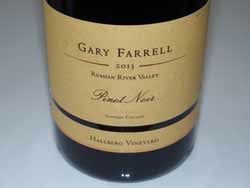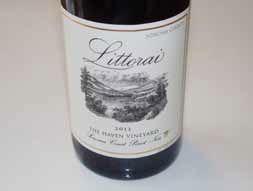PinotFile: 10.15 August 18, 2015
|
Tiptoeing Around the Perception of Alcoholic Warmth in Domestic Pinot NoirI have been wrestling of late with the issue of perceived warmth or even heat in domestic Pinot Noir. I believe this perception should be a component of a tasting note. I find that many reviewers, including those writing in the major wine magazine publications, either fail to comment about perception of alcohol in Pinot Noir wine reviews or downplay its importance. Alan Meadows in the Burghound, is a notable exception. Whether to report the awareness of alcohol (alcohol content in wine is mainly ethyl alcohol, next in importance to water) in a wine is a matter of degree. A subtle warmth is often present on the finish of domestic Pinot Noirs when the alcohol percentage (ABV) is 14.2% and above. This is certainly acceptable and not considered a flaw. However, if the wine finishes with perceived heat or even lip burn, the wine is considered alcoholic, out of balance and flawed, and should be appropriately downgraded. Supertasters are more sensitive to alcoholic heat and may be more likely to report even a mild sensation of warmth (I am not a supertaster). Beyond the undesirability of the sense of alcohol in wine, there are a number of negative outcomes of high alcohol. If the alcohol is high relative to acidity and astringency (riper grapes have lower acidity and higher pH levels), the wine will taste excessively soft, heavy and flabby. Alcohol, being highly volatile, will negate the enchanting aromas and palate of Pinot Noir, especially as the wine warms in the glass. A study published in the scientific journal PLOS One (“What Can the Brain Teach Us about Winemaking? An fMRI Study of Alcohol Level Preferences,” March 18, 2015) used MRI imaging to compare reactions of human subjects to matched pairs of red wines of high- and low-alcohol content. Significantly greater activation in the brain regions responsible for flavor processing and food reward was found for low-alcohol wines in comparison to high-alcohol content wines. The authors concluded that low-alcohol wine induced greater “attentional exploration of aromas and flavors.” The higher the alcohol, the less the chance the wine will be balanced. The ABV in wine never changes over time in the bottle, so if a wine is high proof, the sense of alcohol will increase over time as the wine ages and the fruit dissipates. Higher alcohol wines imply advanced ripeness of grapes at harvest, and this increases the risk of Brettanomyces and bacterial-induced volatile acidity (VA) during vinification. Wines with significantly elevated ABV simply do not compliment food, and raise the specter of undesirable health consequences from potentially excessive alcohol consumption. I have always considered it important to incorporate the ABV of a wine in a tasting note, and, I believe I was the first wine writer to do this many years ago. That said, the absolute ABV is not as important to the taster as the sensory experience. It matters little that a wine is 13.0% ABV or 14.9% ABV if the wine is perceived as hot. I have also attempted to incorporate available harvest Brix data in my reviews. Brix is the relative density of dissolved sucrose in unfermented grape juice. If all the sugar in grapes is fermented, the sugar to alcohol potential strength is as follows: Brix 21.5º = ABV of 12.1%, Brix 22.5º = ABV of 13.0%, Brix 23.7º = ABV 13.6%, Brix 24.8º = ABV of 14.3%, and Brix 25.8º = ABV of 15.1%. Variations may occur if water additions or alcohol-lowering equipment is employed, both unlikely with domestic premium Pinot Noir producers. Recently reported before publication pioneering work by Australian scientists at the Australian Wine Research Institute has led to the discovery of yeast strains that preserve the flavor of fine wine at lower alcohol levels. Certain yeast strains (non-Saccharomyces strains) were shown to produce a 1.8% ethyl alcohol reduction in both Shiraz and Chardonnay wines. This is exciting research that could greatly benefit the wine industry. A very informative article appeared in 2011 in the Journal of Wine Economics (“Too Much of a Good Thing? Causes and Consequences of Increases in Sugar Content of California Wine Grapes”). Probably most wine enthusiasts were unaware of this review, and since it has relevance to this discussion, I will summarize the important points in the article. The authors begin with the premise that the sugar content of California wine grapes has increased significantly over the past 10-20 years, implying a corresponding increase in the alcohol content of wine made with those grapes. They cite data that show that the sugar content of California wine grapes at harvest increased from 21.4º Brix in 1980 (average across all wines and all regions) to 21.8º Brix in 1990 and 23.3º Brix in 2008. This amounts to an increase of almost 7 percent over the most recent 18 years and 9 percent over 28 years. Since sugar converts directly into alcohol, this indicates that a corresponding 9 percent increase in the average alcohol content of wine occurred. This change could be attributed to a number of factors but change in climate was not as significant a variable in this study as the demand for more intense or riper-flavored wines, the so-called “Parker effect,” which resulted in longer hang times. When data from the Liquor Control Board of Ontario was examined, it was found that label claims systematically understated the alcohol content of California wine and this was thought to result from a perception that higher alcohol content diminishes the consumer value of certain wines. A 1% margin of error is permissible in wines with an ABV above 14.1% such that wines with a labeled ABV of 14.1% may actually be anywhere from 14.2% to 15.1%. The fact that so many California Pinot Noirs have a 14.1% ABV on the label supports the notion that wineries fudge a bit to avoid the undesirable perception of higher alcohol content. I looked at the average of reported ABV of California Pinot Noirs reviewed in the PinotFile from six recent vintages, 2008-2013. There were several interesting observations.
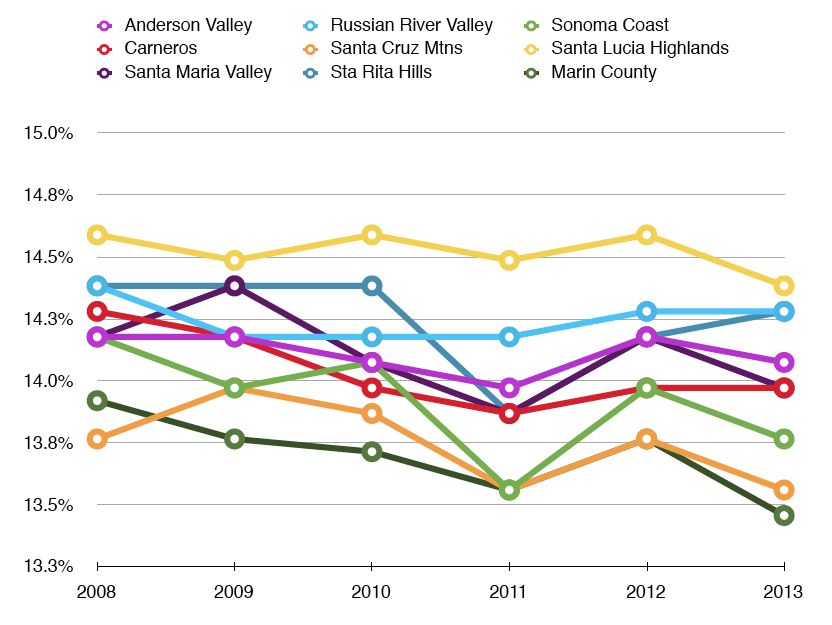 1 Average ABV range was relatively consistent for each vintage except 2011 when this cool vintage showed a noticeable drop in average ABV, especially for cooler regions such as Anderson Valley, Sta. Rita Hills, Sonoma Coast and Santa Cruz Mountains. 2 Over this six year period, there was not an escalation of ABV in any region. This indicates that California Pinot Noir, at least over the most recent six vintages, did not show the increase in average ABV that has been reported for all red wines as a group in California. 3 Santa Lucia Highlands Pinot Noirs had a significantly higher average ABV in every vintage. 4 Marin County and Santa Cruz Mountains had the lowest average ABV in every vintage (tied with Sonoma Coast in 2011). 5 The Russian River Valley and Santa Lucia Highlands, both warmer Pinot Noir growing regions, showed a more consistent average ABV over the six vintages than the other cooler regions.
Furthermore Pinot Noir ImpressesI love to give Chad Richards, one of the winemaker/owners of Furthermore Wines, a bad time about the winery’s labels. The winery's name, Furthermore, is in small script way at the bottom of the label which is 80% blank, and the name of the vineyard (Furthermore only produced vineyard-designated Pinot Noirs until recently) is in even tinier print below the winery name. Presbyopic adults will find the label challengingto read to say the least. That said, I don’t give Chad a bad time about the quality of Furthermore Pinot Noirs for they are superb. I have been reviewing the wines for many years, dating back to the origins of the winery in 2006 at San Francisco’s now defunct Crushpad. The wines are now produced at an urban winery in San Francisco (ROAR), which Chad likes to downplay since consumers often perceive wines produced at urban wineries of lesser quality. This is definitely not the case with Furthermore Wines which have steadily and dramatically improved with each vintage. I reviewed a number of 2012 Furthermore wines in March of this year, awarding high scores to all the offerings: Gloria Vineyard (94), Sierra Mar Vineyard (91), Gap’s Crown Vineyard (92), Nevina’s Vineyard (93), and Weir Vineyard (91). Four additional 2012 vintage Pinot Noirs including a small production, inaugural release special cuvée are reviewed here. At this year’s San Francisco International Wine Competition, the Andre Tchelistcheff Winemakers of the Year award went to Chad Richard, Robert Zeches and Shalini Sekhar of Furthermore Wines. In addition, the 2013 Furthermore Nevina’s Vineyard Sonoma Coast Pinot Noir won "Best Pinot Noir" in the competition and all 2012 Pinot Noirs received either a Gold or Double Gold award. The wines are produced from grapes sourced along California’s coastal region, except for the estate Nevina’s Vineyard which was added to the lineup in 2011. The sources have varied some in different vintages and have included the following premium vineyards:
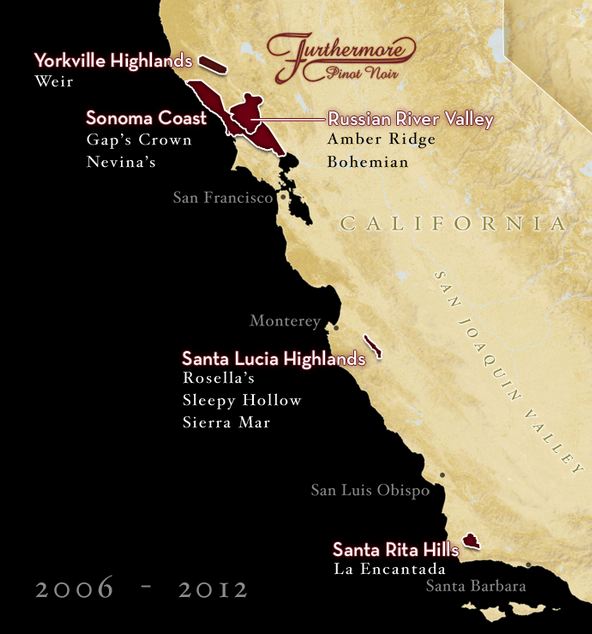 Furthermore Pinot Noir is sold on the winery’s website at www.furthermorepinotnoir.com and are sensibly priced. In addition, the wines are distributed to select restaurants and wine retailers in Northern California. The website was updated and considerably improved while I was writing this feature.
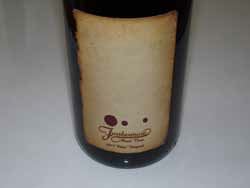 2013 Furthermore Eden Vineyard Sonoma Coast Pinot Noir 13.5% alc., pH 3.72, 125 cases, $50. 100% Mount Eden clone (thus the name of the vineyard). Harvest Brix 24.6º. Aged in 100% French oak barrels, 40% new. · Moderately light reddish purple color in the glass. Striking aromas of fresh strawberry, cherry and sandalwood lead to a light to mid weight core of intensely flavored oak-kissed cherries. Very forward and immensely satisfying with a silky mouthfeel, the wine finishes with plenty of cherry goodness. When tasted later in the day from a previously opened and re-corked bottle, the wine had further blossomed and offered a delightful charge of cherry and spice. Plenty of Pinot singing. Score: 94
2012 Furthermore La Encantada Vineyard Sta. Rita Hills Pinot Noir 14.2% alc., 100 cases, $50. · Moderate reddish purple color in the glass. Shy, but pleasing aromas of strawberry, raspberry and woodshed. Darker fruited on the palate featuring flavors of black raspberry and pomegranate. Forward and enjoyable now, with supple tannins and a lovely velvety mouthfeel that is quite seductive. Score: 91
2012 Furthermore Rosella’s Vineyard Santa Lucia Highlands Pinot Noir 14.8% alc., 151 cases, $50. · Moderately light reddish purple color in the glass. Reserved aromas of cherry, rose hips tea and baking spices. This wine is packed with stunning spiced cherry cola flavor that attacks with a vengeance and persists through a long, refined finish. The tannins are balanced, the texture is rich and lush, and a mild tug of oak plays in the background. Score: 91
2012 Furthermore ALCHEMY Sonoma Coast Pinot Noir 14.2% alc., 88 cases, $85. A new bottling that is a special cuvée blended from a subset of the winery’s single vineyard designates. This barrel selection is meant to reflect the vintage and the terroir of the Sonoma Coast and to age well. This wine will be made only in great vintages when the magic happens. · Moderately dark violet red color in the glass. There is noticeable oak overlay in this mid weight plus wine which offers a luscious array of darker red and black fruits accented with spice, cola and dark chocolate. The mid palate attack is intense and the finish is rich and satisfying. Lay this one down for a few years to allow the oak to settle in and the aromatics to fully arrive. Score: 93
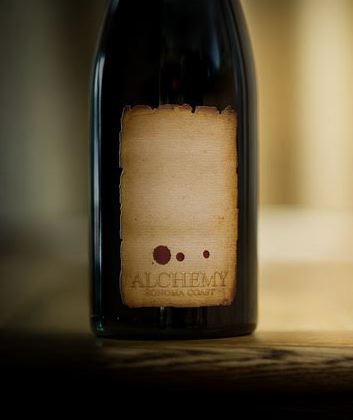
2012 Talisman 20th Vintage Pinot NoirI always look forward to receiving the Pinot Noirs from Scott and Marta Rich because they never fail to please me. Scott, who learned his winemaking under Tony Soter when Tony was at Etude in Carneros, launched his label in 1993. He searches for vineyards that are challenging and expressive since he believes extreme vineyards are more likely to reveal terroir. Scott tends to use more new oak than many California vintners, incorporates some whole cluster fermentation, and ages the wines in barrel for an extended time. Decanting is preferable if you drink them any time soon after their release. They are noteworthy for their age ability. Talisman wines are sold through the website at www.talismanwine.com, a mailing list, and the quaint tasting room in a 100-year-old building in downtown Glen Ellen. The five wines reviewed below have been released and additional 2012 Pinot Noirs will appear this fall and next winter.
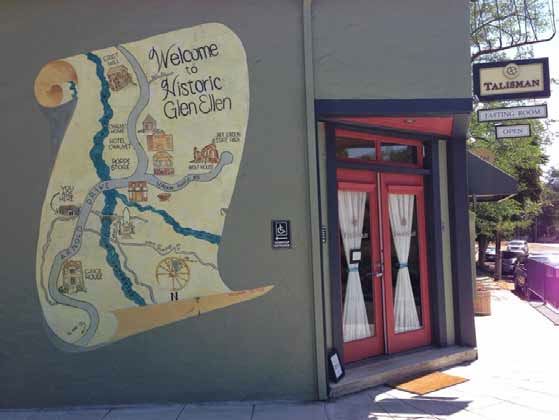
NV Talisman Cuvée No. 4 North Coast Pinot Noir 14.4% alc., 242 cases, $38. Released August 1, 2015. Composed of wines from multiple vineyards and vintages. 25% whole cluster. Wild yeast fermentation. Aged in 100% French oak barrels, 60% new. · Moderately light reddish purple color in the glass. The nose leads with hi-tone black cherry and toasty oak aromas. The light to mid weight core of cherry fruit is deep and persistent, backed by significant oak overlay. A satiny texture, modest tannins and a cherry-fueled finish complete the picture. The oak tends to integrate over time in the glass and is more compatible the following day from a previously opened and re-corked bottle. This wine should show more balance with additional time in the cellar. Score: 89
2012 Talisman Badger Black Vineyard Sonoma Coast Pinot Noir 14.3% alc., pH 3.68, TA 0.63, 96 cases, $75. Released July 1, 2015. This vineyard is located on a wind-blown ridge west of the town of Petaluma. Planted to a suitcase clone in 2001 at 600 feet elevation in Steinbeck loam soil. UCD clone 90. Yield 2.1 tons per acre. 30% whole cluster. Native fermentation, and extended post-fermentation maceration. Aged 21 months in 100% French oak barrels, 50% new. · Moderate reddish purple color in the glass. The nose is very reserved but with coaxing, aromas of dried herbs, stem and mushrooms on the grill appear. The flavors are similarly savory with notes of herbs and earth highlighting the black cherry and black raspberry fruit. The tannins are muscular but not imposing and more integrated the following day from a previously opened and re-corked bottle. This rustic wine has very little fruit personality now, and time will be needed for full fruit expression and reduction of the tannic edge. Score: 88-89
2012 Talisman Wildcat Mountain Vineyard Sonoma Coast Pinot Noir 15.0% alc., pH 3.74, TA 0.60, 173 cases, $52. Released June 1, 2015. This vineyard is the highest in the area, situated at 750 feet elevation on the southern flank of the mountain range straddling both Los Carneros and Sonoma Coast appellations. It is exposed to cold and foggy air that arrives through the Petaluma Gap and from San Pablo Bay. Planted in 1998 by Nancy and Tony Lilly and their partner, Steve MacRostie in decomposed volcanic basalt to clones 115, 777 and Pommard. 25% whole cluster. Yield 2.6 tons per acre. Native yeast fermentation, extended postfermentation maceration. Aged 21 months in 100% French oak barrels, 57% new. · Moderately light reddish purple color in the glass. Lovely perfume of wild berries and macerated cherries with just a hint of oak. Silky smooth on the palate with a mid weight array of dark raspberry, pomegranate and cherry flavors framed by refined tannins. There is modest oak seasoning and a healthy tannic backbone that predicts age ability. When tasted the following day from a previously opened and re-corked bottle, the nose was still bright and pleasing and that silky smooth texture still captivated. My only nit is that a hint of alcoholic warmth creeps in slightly on the finish. Score: 91-92
2012 Talisman Spring Hill Vineyard Sonoma Coast Pinot Noir 14.8% alc., pH 3.78, TA 0.59, 262 cases, $44. Released June 1, 2015. This vineyard was planted in 2001, 2002 and 2003 at 600 foot elevation in far western Petaluma. Clones are 777, Pommard, and Calera. Yield 2.5 tons per acre. 30% whole cluster, native fermentation, extended maceration. Aged 21 months in 100% French oak barrels, 50% new. · Moderate reddish purple color in the glass. Shy, but pleasant aromas of black cherry pie glaze and complimentary toasty oak. The dark cherry core is fresh and rewarding and accented with notes of mocha and savory herbs. The tannins are modest, the wine is accordingly quite approachable now but was much better the following day from a previously opened and re-corked bottle when the nose became much more expressive, the texture was notably soft and mellow, the tannins suave, and the bright cherry fruit nicely complimented by nutty oak. A bit of alcoholic warmth shows up on the finish. Score: 90-91
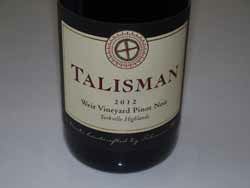 2012 Talisman Weir Vineyard Yorkville Highlands Pinot Noir 14.5% alc., pH 3.75, TA 0.65, 268 cases, $65. Released June 1, 2015.This 15- acre vineyard was planted in 1992 in loamy clay and gravelly, welldrained soils at 850 to 1000 foot elevation. Clones are Pommard, Wädenswil, and selections are from Rochioli and Romanee-Conti vineyards. 25% whole cluster, native yeast fermentation, and extended post-fermentation maceration. Aged 201months in 100% French oak barrels, 64% new. · Moderately light crimson color in the glass. This wine showed a remarkable transition over night when re-tasted from a previously opened and re-corked bottle. The nose is très Pinot with scents of cherry, rose petal and spice. Light to moderate in weight, but packed with flavors of red cherry, raspberry, and spice. The tannins are silky, the oak is perfectly integrated, and the overall impression of this charming wine is elegance. This wine has more zippy acidity than the other Talisman wines reviewed on this date. Decant if you drink now, or cellar a few years for a special experience. Score: 92-93
Sips of Recently Tasted California Pinot Noir
The estate vineyard, located at 1,000 feet elevation on the northwestern shoulder of Sonoma Mountain, was originally planted to Cabernet Sauvignon in 1973, but the site, located proved too cool for consistent success with this variety. The vineyard founder, Dave Steiner, coaxed by noted winemaker Rod Berglund, planted a block of the vineyard to Pinot Noir in the early 1990s. Present owners, Nate and Lauren Belden acquired the site in 2005 and redeveloped the vineyard, named Steiner Vineyard after Dave Steiner. Only 1.5-acre stand of Pinot Noir clone 667 planted in 1998 could be saved. Soils are ancient volcanic in type. Vineyard manager is Chris Bowland and winemaker is Justin Harmon. Visit www.beldenbarns.com.
2013 Belden Barns Estate Sonoma Mountain Pinot Noir 14.5% alc., pH 3.80, TA 0.52, 325 cases, $38. Aged 16 months in 100% French oak barrels, 42% new. · Medium reddish purple hue in the glass. The nose lacks fruit expression, with oak-driven espresso the overwhelming scent. The luscious black cherry and black raspberry core of fruit is buried in oak and overwhelmed by flavors of coffee and dark chocolate, but does rise up on the lengthy finish. When tasted the following day from a previously opened and re-corked bottle, the wine still smelled and tasted of coffee. This wine will appeal to those who prefer lavishly-oaked Pinot Noir. Score: 87
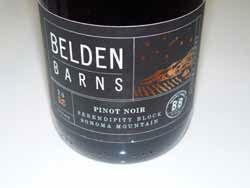 2013 Belden Barns Serendipity Block Sonoma Mountain Pinot Noir 13.5% alc., pH 3.66, TA 0.57, 71 cases, $48. Sourced from the best pocket of the Steiner Vineyard that was inter-planted with 9 Pinot Noir clones. 100% whole cluster. Aged 16 months in 100% neutral French oak barrels. · Moderate reddish purple color in the glass. A polished, light to mid weight style, with a mix of purple and black fruits framed by firm, but not terribly imposing tannins. Oak plays an insignificant role and the finish exhibits a generous burst of both sweet and citrus-imbued purple fruits. Score: 89
LUMEN This winery is a joint effort of Will Henry and iconic Santa Barbara County winemaker Lane Tanner. Grapes are picked relatively early on the harvest calendar to create a livelier wine that is lower in alcohol. Lane Tanner was one of the first female winemakers in Central California. Will Henry is a widely published journalist and photographer and founder of the non profit organization Save The Waves Coalition. Will and Lane make the wines together in Santa Maria. Visit the website at www.lumenwines.com.
2013 LUMEN Santa Barbara County Pinot Noir 13.8% alc., 800 cases, $29. Sourced from several vineyards (mainly Sierra Madre Vineyard) and picked early for added vibrancy. Clones 77, 115 and Pommard 5. Harvest Brix 23.4º. 100% de-stemmed. Aged in 15% new and 85% neutral French/ Hungarian oak barrels. Unfined and unfiltered. · Moderately light reddish purple color in the glass. Bright aromas of Maraschino cherry and dried rose petal. Welcome attack of fresh black cherry fruit framed by complimentary oak. The tannins are nicely balanced, the fruit is lifted by tangy acidity, and the finish is uplifting and refreshing. This elegant wine is very well crafted. Score: 90
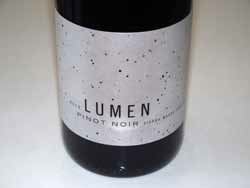 2013 LUMEN Sierra Madre Vineyard Santa Maria Valley Pinot Noir 13.9% alc., 99 cases, $49. A barrel selection. Harvest average Brix 23.7º. Clones 667 and Pommard 5. Aged in 84% neutral French oak and 16% new Hungarian oak. · Moderate reddish purple hue in the glass. The aromas of fresh boysenberry, plum, spice and toasty oak draw you into the glass. Beautifully balanced and polished on the palate, with flavors of black raspberry, boysenberry and plum with a slight earthy undertone. The oak seasoning is complimentary, the tannins are proportional and the wine’s juicy acidity makes for refreshing drinking. The intensely aromatic spiced plum on the very long finish is especially impressive. This wine truly reflects Santa Maria Valley terroir and is the best Pinot Noir I have ever had from this vineyard. Score: 94
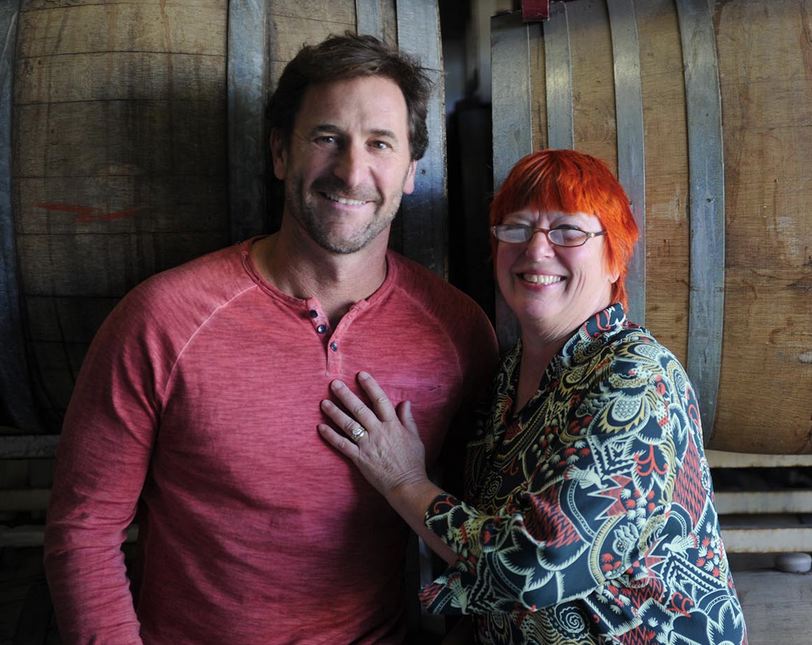 Woodenhead Vintners Veteran winemaker Nicolai Stez, who work at the side of Burt Williams for many years, sent me these 2012 Pinot Noirs. The 2012 Buena Tierra Vineyard bottling scored 98 points and was awarded Best California Pinot Noir and Best of Region at the 2015 California State Fair. Visit www.woodenheadwine.com.
2012 Woodenhead Kent Berry Vineyard Santa Cruz Mountains Pinot Noir 14.1% alc., $N/A. · Moderately light crimson color in the glass. The nose leads with aromas of red cherry, strawberry and oak spice. Light to mid weight flavors of red cherry, blueberry and pomegranate are propelled by bright acidity and framed by fine grain tannins. Easy to drink but with a bit of alcoholic heat on the finish. Score: 88
2012 Woodenhead Russian River Valley Pinot Noir 13.7% alc., 538 cases, $45. Unfined and unfiltered. · Moderate light crimson color in the glass. Gorgeous nose with extravagant aromas of crush Bing cherries. Quintessential Russian River Valley flavor profile with mid weight tastes of Bing cherry, cola and spice. On the elegant side in this vintage, with good vibrancy, balanced soft tannins and complimentary oak in the background. Ready now, but impeccable balance predicts a long life ahead. Score: 91
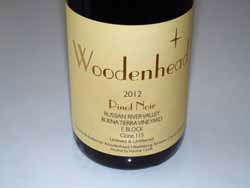 2012 Woodenhead Buena Tierra Vineyard E Block Clone 115 Russian River Valley Pinot Noir 13.6% alc., 149 cases, $75 (2 bottle limit). · Moderately dark reddish purple hue in the glass. Complex aromatic profile with scents of black cherry, black raspberry, clove, cardamom, and toasty oak jumping from the glass. Delicious mid weight core of black cherry, raspberry, vanilla, and Moroccan spice goodness. Impressive polish and harmony with a satiny mouthfeel and a very long finish that returns waves of luscious oak-infused fruit flavor. Still pumping out aromatic and flavor highlights the following day from a previously opened and re-corked bottle. Score: 93
Still More
2011 Calera Selleck Vineyard Mt. Harlan Pinot Noir
14.3% alc., 214 cases, $71. This 4.8-acre vineyard was
planted in 1975. Yield 0.64 tons per acre. Native yeast fermentation. Aged 18 months in French oak barrels,
30% new. Unfiltered.
·
Moderately light cherry red color in the glass. This wine speaks of the earth, with aromas
of loamy soil, iron and oak and flavors of earth-kissed black cherry, dark raspberry, edible flower, and spice.
Light to mid weight in style, with mildly firm tannins and complimentary oak in the background. When tasted
the following day from a previously opened and re-corked bottle, the wine was still enticing and impressive for
its balance, but the fruit aromas had still not shown up on the nose.
Score: 91-92
2012 Calista The Coast Range California Pinot Noir
14.1% alc., pH 3.77, TA 0.56, 17,000 cases, $24.99. A
blend of Anderson Valley, Russian River Valley and Santa Lucia Highlands fruit. 100% de-stemmed, several
day cold soak, fermentation in small, open-top fermenters, twice daily punch downs. Aged 14 months in French
oak barrels, 30% new.
·
Moderate reddish purple color in the glass. The inviting aromas of dark red cherries and
berries lead to a middleweight, appealingly-flavored wine offering dark red and purple fruits that display some
persistence on the finish. The fine grain tannins rise up on the finish and oak peeks out over time in the glass.
A bit of alcoholic warmth shows up on the finish as well.
Score: 88
2013 Gary Farrell Hallberg Vineyard Russian River Valley Pinot Noir
14.1% alc., pH 3.44, TA 0.67, 1,290 cases, $55. Released January 21,
2015. The 100-acre Hallberg Vineyard is located in the Green Valley of
Russian River Valley appellation. Mostly de-stemmed with a small
portion of whole cluster. 5 to 7-day cold soak, 10 to 15-day extended
maceration. Aged 14 months on the primary lees in 100% French oak
barrels, 40% new.
·
Moderately light reddish purple hue in the glass. This
wine aims to please with aromas and flavors of red berries, blueberries,
and cherries with a modicum of oak contribution. Light to mid weight in
size, with appealing tension and an uplifting cut of acidity typical of Gary
Farrell wines. Quite charming.
Score: 92
2013 J. Lohr Fog’s Reach Arroyo Seco Monterey County Pinot Noir
14.9% alc., pH 3.72, TA
0.59, 3,321 cases, $35. Estate grown clones including Dijon 115, 667 and 777, and Pommard 4.
Harvest Brix 25.8º. Aged 8 months in French oak barrels, 60% new.
·
Dark reddish purple color in the
glass. Aromas of ripe black cherry and blackberry with a tug of vanilla. Full-bodied, but light on its
feet and not overwrought, with a plush core of assorted dark berry flavors accented with highlights of oak-driven
dark chocolate and espresso. The wine is velvety in the mouth with appealing balance, and although not particularly
complex, the fruit and texture are seductive. A crowd pleaser for those who prefer the riper, bolder
style of Pinot Noir typical of J. Lohr Pinot Noir offerings.
Score: 89
2012 Littorai The Haven Sonoma Coast Pinot Noir
13.8%
alc., $80. This site is northwest of Occidental on the southern
shoulder of a 1200-foot ridge. The soils are very diverse
including sandstone, shale and gravel. Planted in 2001, this is
usually the latest ripening site in the Littorai vineyard family.
There is about 40 different rootstock and clonal combinations
within a very small 4-acre vineyard. It is farmed using
agroecological and biodynamic methods but is not certified. Yields are
tiny.
·
Moderate reddish purple color in the glass. Delightful perfume of
ripe berry mash. Delicious mid weight plus core of perfectly ripened dark
red berry and black cherry fruits. A bit earthy and savory with a hint of
cola. The suede-like texture is very appealing and there is a well-proportioned
tannic backbone. Beautifully balanced, this classy wine is just now showing some appeal, but will
certainly be more complex and purposeful with further cellaring.
Score: 93-94
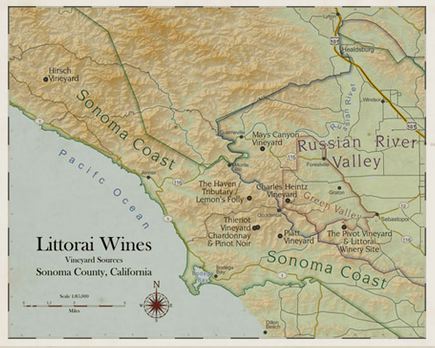
2013 Mansfield-Dunne Peterson Vineyard Santa Lucia Highlands Pinot Noir 14.2% alc., pH 3.74, TA 0.59, 340 cases, $48. Winemaker Ed Kurtzman. Clones “828,” 667, Pommard 5, 115 and 777. Aged 13 months in French oak barrels, 67% new. · Moderate reddish purple color in the glass. The aromas of black raspberry preserves, plum, spice and rose petal are inviting. Very charming and polished, with a mid weight core of black cherry and raspberry fruit accented with spice and a tug of oak. Easy to like, with supple tannins and a finish that has length and juicy intensity. Even better the following day from a previously opened and re-corked bottle. This wine is certainly enjoyable now, but further aging will allow more expression and better oak integration. Score: 91
2013 Manzoni Home Vineyard Santa Lucia Highlands Pinot Noir 14.7% alc., 708 cases, $35. Released summer 2015. Dijon clones 115 and 777. · Moderately light cherry red color in the glass. Nicely perfumed with aromas of strawberry, cherry and sandalwood that draw you into the glass. Very tasty, with a discreetly concentrated core of cherry fruit accented with notes of cola, spice and anise in the background. This highly approachable wine has a well-balanced tannic backbone and good finishing length, and will appeal to those who enjoy a respectable contribution of oak in their Pinot. Score: 91
2013 Migration Russian River Valley Pinot Noir 14.1% alc., 19,722 cases, $38. A blend of fruit from the cooler Green Valley of Russian River Valley and slightly warmer parts of the Russian River Valley. · Moderately light reddish purple color in the glass. Plenty of interest here with aromas of strawberry, red cherry, baking spice and toasty oak. The light to mid weight flavors of cherry, black raspberry, rhubarb and cola are quite enjoyable, albeit with a slightly confected tone. A solid, forward drinker with supple tannins, a silky texture, and a sweet cherry finish. Score: 89
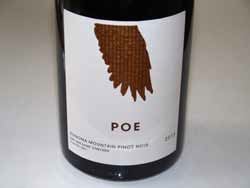 2013 POE Van Der Kamp Vineyard Sonoma Mountain Pinot Noir 13.6% alc., $45. This iconic vineyard, located at 1,400 feet elevation at the top of Sonoma Mountain, was planted in the late 1950s. · Moderately light crimson color in the glass. Seductive aromas of fresh cherry pie glaze, cranberries and a touch of oak. The bright black cherry core lifts the senses and the vibrancy is thirst-quenching. Nicely spiced, with modest tannins, as well as welcome elegance and balance. Even better the following day from a previously opened and re-corked bottle showing more flavor intensity on the palate. Impressive wine from a celebrated vineyard! Score: 93
2013 Rally Point Wines Russian River Valley Pinot Noir 14.1% alc., 147 cases, $38. Released March 2015. A portion of revenues from this wine are donated to organizations that support veterans or share the winemaker’s values. Aged 8 months on the lees in French oak barrels and then racked into barrels for 3 months before bottling. Unfined and unfiltered. · Moderately light cherry red color in the glass. A lighter-weight wine, even slightly dilute, with pleasant aromas and flavors of fresh cherries, dried herbs and oak. Easy to drink, with silky, supple tannins, finishing on a cherry note. Score: 87
2013 Wait Cellars Russian River Valley Pinot Noir 13.5% alc., 75 cases, $36. Release fall 2015. Sourced from the cool Devoto Garden Vineyard west of Sebastopol (clones 667 and 115), and the warmer Skikos Vineyard west of Santa Rosa (clones 77 and Swan). 25% whole cluster, 5-day cold maceration. Native yeast fermentation. Aged 10 months on the lees in French oak barrels, 33% new. · Moderately light crimson color in the glass. Pleasant aromas of cherry and earthy flora. Discreetly concentrated and very juicy, with appealing flavors of black cherry, boysenberry, cola and spice. Elegantly crafted and easy to drink, with balanced tannins, vibrant acidity and a gloriously fruity finish. Score: 90
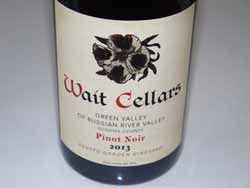 2013 Wait Cellars Devoto Garden Vineyard Green Valley of Russian River Valley Pinot Noir 13.0% alc., 350 cases, $33. Release in fall 2015. This site is on a windy ridge west of Sebastopol, renowned for its cool temperatures and fog, and well-drained Goldridge soil. Harvest Brix 22º-23º. Clones “828,” 667 and 115. 25% whole cluster. Wild yeast fermentation. Aged 10 months on primary lees in 20% new French and Hungarian oak barrels, with lees stirring throughout the winter. Unfined and unfiltered. · Moderately light crimson color in the glass. Lovely aromas of strawberry, raspberry, clove and sage. The flavors echo the nose, in an elegant style that is also crisp, with mild tannins and impeccable balance. This light and bright wine reflects its Green Valley origins and would be a perfect partner at the dinner table. Score: 91
Pinot Briefs2015 San Francisco International Wine Competition The 35th annual San Francisco International Wine Competition was held on June 12, 13, and 14, 2015 in San Francisco and included 4,902 wines from 29 states and 26 countries. Pinot Noir wines won 32 Double Gold Awards, 20 of which were from the 2013 vintage. A Double Gold is awarded when all the judges unanimously agree on a Gold Award. As noted previously in this issue, Best Pinot Noir went to the 2013 Furthermore Nevina’s Vineyard Sonoma Coast Pinot Noir. Pinot Noir Double Gold winners include 2013 Navarro Vineyards Methode a l’Ancienne Anderson Valley ($29), 2012 Sean Minor Carneros ($20), 2013 10Span Santa Barbara County ($10), 2014 Sean Minor Carneros Pinot Noir Rosé ($16), 2013 Josh Cellars California ($17), 2013 Furthermore Russian River Valley ($50), 2012 Crespi Santa Maria Valley ($20), 2013 Amore Fati Ouroboros Sonoma Coast ($45), 2013 Ano Verde Santa Barbara ($20), 2012 Cru Montage Santa Lucia Highlands ($25), 2013 Aquinas Napa/Sonoma ($20), 2013 Austerity Santa Lucia Highlands Pinot Noir ($17), 2013 Graton Ridge Cellars Russian River Valley ($45), 2012 Lead Hill Santa Barbara County ($19), 2013 Stateland Cellars Santa Barbara Pinot Noir ($15), 2012 Sunstone Vineyards & Winery Santa Barbara County ($42), 2012 Melhill Sonoma Coast ($60), 2013 White Oak Vineyards & Winery Estate Grown Russian River Valley ($35), 2013 Red Truck California Pinot Noir ($10), 2012 Mollie Wine Santa Maria Valley ($32), 2012 Jackson Estate Vintage Widow Marlborough ($34), 2013 Black Stallion Los Carneros ($30), 2013 Fog Crest Vineyard Laguna West Russian River Valley ($39), 2012 Boekenoogen Vineyards & Winery Estate Santa Lucia Highlands ($55), 2013 Francis Ford Coppola Winery Director’s Sonoma Coast Pinot Noir ($21), 2014 Tolusa Rosé of Pinot Noir Edna Valley ($24), and 2013 Brassfield Estate Winery High Valley ($20). Bounty of Yamhill County The Bounty of Yamhill County (BOYC) is an annual summer celebration of the wineries, farms and chefs of Yamhill County, Oregon. Tickets are now available for the three-day event, August 28-30, 2015. The event was recently placed second by readers of USA TODAY on the list of Best General Food Festival in the United States. Welcome winemaker dinners, artisan food producer tours and lunch, custom classes and experiences and an al fresco dining feast at Sokol Blosser Winery. Visit www.bountyofyamhillcounty.com for more festival details and tickets.
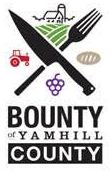 Wine Road Wine Road is an association of 200+ wineries and 50 lodgings in Northern Sonoma County spanning the Russian River, Alexander and Dry Creek Valleys. 2016 marks the association’s milestone 40th anniversary. The association is known for three annual wine events: A Wine & Food Affair in November, Winter Wonderland in January, and the Barrel Tasting weekends in March. Wine Road is also a resource for visitors to the region. Because of the approaching anniversary, a yearlong celebration will be held in 2016 featuring special events and activities. Visit www.wineroad.com for details on upcoming events and a free map of the Wine Road region. First Black Winemaker in Oregon Bertony Faustin is Oregon’s first recorded Black winemaker, a rarity in a generally white, high brow industry. He is owner of Abbey Creek Vineyard and Winery and has become a spokesperson for other minorities in the Oregon wine industry. He is also the personal passion behind “Red, White & Black,” a documentary film made about minority winegrowers which is seeking support through www.lindiegogo.com. Bertony notes, “Some people are surprised and seemingly unsure of what to say or do when they learn I’m not a vineyard hand or the cleaning man. I am the mythical unicorn.” “Red, White & Black” features the following winemakers: Bertony Faustin and Ocean Yap-Powell of Abbey Creek Vineyard, Jarod Sleet of Argyle Winery, Jesus Guillen of Guillen Family Wines and White Rose Estate, Laurie Lewis and Renee Neely of Hip Chicks Do Wine, Andre Mack of Mouton Noir Wines, and Shuhe Hawkins of Seven Sails Vineyard. BTW, Abbey Creek Vineyard does offer Pinot Noir.
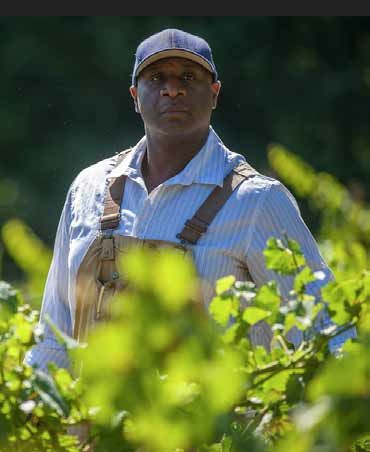 Summer is Time for Rosé A very detailed article about Rosé wines, written by certified wine specialist, Joe Roberts, was published on June 9, 2015, at www.fix.com/blog/an-introduction-to-rose-wine/. This informative piece that concentrates on international styles of rosé, and although Pinot Noir rosé is not given any mention, I found the article enlightening.
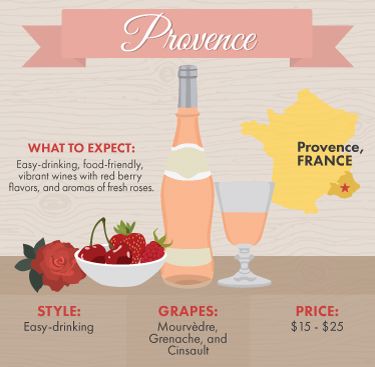 Wine Trails Now Highlighted in SLO Wine Country’s New 2015-16 Map SLO (San Luis Obispo) Wine Country on California’s Central Coast has unveiled six themed wine tasting trails now depicted on new maps available at www.slowine.com. Wine trail visitors are invited to tag #slowwinetrail and share their experiences, favorite trails and photos. Vineyards to Villages (V2V) V2V has partnered with select wineries in Sonoma County to help bring clean water, sanitation facilities and hygiene education to primary and secondary schools in East Africa that currently have no access to clean water. The proceeds from select wines purchased from visiting participating wineries or through the V2V online marketplace support this charitable cause. For more details about the project and a list of participating wineries, visit https://gpfd.org/vineyards-to-villages.
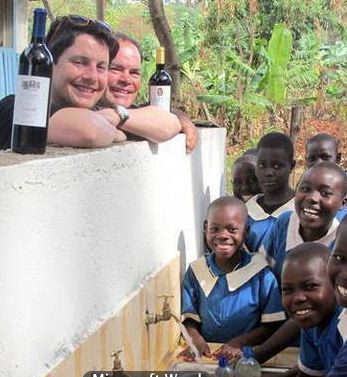 TerraDash This is a new digital concierge that addresses the needs of wine tourists. The web + mobile tool offers personalized preference and context-based destination recommendations, end-to-end multiple destination trip itineraries in a few clicks complete with optimized scheduling and routing, visit confirmations, hands free trip navigation, and in-app tools for capturing each winery visit experience. TerraDash is free to consumers. Visit www.terradash.com. Quench Magazine Join the current 250,000 readers and check out this food and drink magazine which features excellent newsworthy articles on wine, beer and spirits from around the world as well as wine reviews. The stories are written in understandable plain sense language, are brief and are easy to flip through online. The magazine is published eight times a year. Read through the latest online content at http://quench/me/, or visit 36 archived issues at http://issuu.com/quenchbytidings. What separates this magazine from others on wine is that there are many food related stories as well which most wine lovers and foodies will enjoy. 101 Best Wineries in America for 2015 The Daily Meal unveiled recently the 101 Best Wineries in America for 2015. The list was compiled by a team of well-known sommeliers, wine writers, chefs, restaurateurs and the wine-savvy editors of The Daily Meal. They also consulted the leading wine publications and newsletters and considered recent awards from prestigious competitions. Two-thirds of the wineries listed were based in California. Tablas Creek Vineyard was number one on the list, with Ridge Vineyards second. Pinot Noir producers of note that made the list include Au Bon Climat, Calera, Robert Sinskey Vineyards, Littorai, Domaine Drouhin Oregon, Navarro Vineyards & Winery, Copain Wines, Ponzi Vineyards, Patz & Hall, Talley Vineyards, Domaine de la Cote, Hirsch Vineyard, Arnot-Roberts, The Eyrie Vineyards, Wind Gap Wines, Hanzell Vineyards, Elk Cove Vineyards, Evening Land Vineyards, Soliste, Ken Wright Cellars, Mount Eden, Tensley Wines, Foxen Winery, Rochioli Vineyards & Winery, Iron Horse Vineyards, Sandhi Wines, Truchard Vineyards, Chehalem Winery, Balletto Vineyards & Winery, Peay, The Ojai Vineyard, MacPhail Family Wines, and Dolin Malibu Estate Vineyard. I can’t argue with most of the choices, but like any “Best” list, many worthy wineries were left off the list and I would never undertake such a list. Visit www.thedailymeal.com/americas- 101-best-wineries. Scholarship in Honor of Charles Bacigalupi The Russian River Valley Winegrowers (RRVW) and Bacigalupi Vineyards founded a scholarship in 2014 in honor of Charles Bacigalupi and is offered annually to a student concentrating in the field of viticulture or viticulture business. The 2015 recipient was Lori Bisordi of Santa Rosa, CA, who plans a career in vineyard management. Crowdfunding for Documentary Film Filmed over a two-year period, “Burgundy: People with a Passion for Wine,” is a mosaic of stories about people who’s lives revolve around the culture, challenges and pleasures of wine and winemaking in Burgundy’s Côte d’Or. The crowdfunding campaign went live on Tuesday, July 21, 2015, and will run for 40 days. The film will be submitted to international film festivals with international distribution to wine aficionados beginning in the fall of 2016. I thought the title of the film a bit mundane, since people involved in wine and winemaking all over the world have a passion for wine, and “passion for wine” is a hackneyed phrase. Pinot in the City Over 60 world-class Pinot Noir producers from the Willamette Valley will be pouring at Pinot in the City in San Francisco at the Golden Gate Club on August 26, 2015. Tickets are available through Eventbrite at www.eventbrite.com/e/pinot-in-the-city-tickets-17659878171.
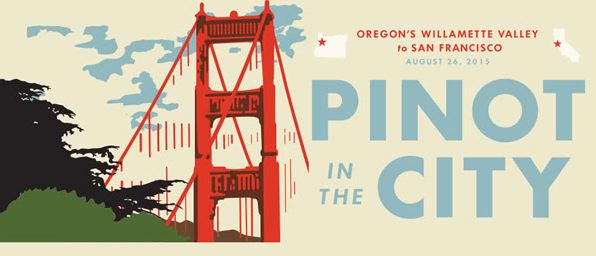 Üllo Wants to Purify Your Wine Chicago-based startup, Üllo, has launched a new product that removes sulfites from wine that are added to preserve wine but are no longer needed once the bottle is opened. Üllo purifies wine using a food-grade polymer filter to selectively remove sulfites, allowing the wine to flow through otherwise unaffected. Üllo maintains the original flavor and character of the wine while restoring sulfites to a more naturally occurring level of less than 10 ppm. The product is aimed at those who are allergic to sulfites. The Üllo purifier is placed on top of a variety of wine glasses or the Üllo carafe and decanter. Üllo can also aerate wine in the same pour. Üllo launched on Kickstarter in July. By pre-ordering through the campaign, consumers will contribute towards production of the Üllo. Visit www.ullowine.com to pre-order. A non biased and comprehensive review of the device is at: www.wineturtle.com/ullo-wine-purifier-review/. Windy Oaks Celebrates 1-year Anniversary of Tasting Room Judy and Jim Schultze will be celebrating the one-year anniversary of their off-property tasting room on the West side of Dolores, between 5th and 6th, in the courtyard across from Jack London Pub in Carmel-by-the-Sea. A celebration will be held August 22 & 23 from 12-7 including special tastings, discounted wines, locally catered appetizers and music. Penner-Ash Debuts Expanding Tour and Tasting Offerings Owners Lynn and Ron Penner-Ash invite visitors beyond the ordinary tasting room experience to tour the winery, taste library Pinot Noir wines in the intimate Fireside Room, enjoy private seated tastings on the fermentation deck, hike among the vines, and enjoy a picnic lunch in the estate vineyard or tasting room. New offerings are also available for small and large groups that include a variety of private event options featuring the culinary talents of local chefs, caterers and restaurants. For a full menu of Penner-Ash Wine Cellars’ tastings and hospitality offerings, visit the winery’s newly relaunched website at www.pennerash.com.
Cooked Pinot - How Do You Tell?
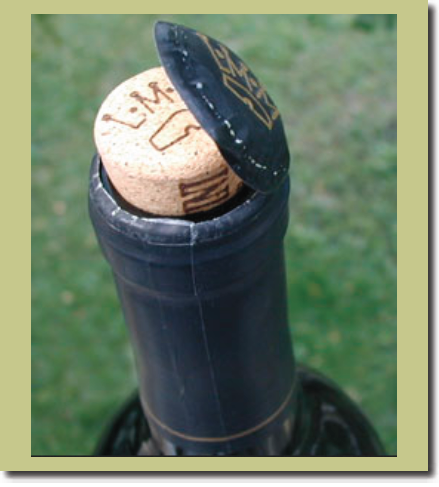 Wineries continue to send me wine for review over the past few months despite the persistent heat here in Southern California where I live and points of origin in California and Willamette Valley. Some wines are sent by FedEx cold shipping or overnight which is probably secure, but other shipments worry me, particularly since insulated foam has been largely replaced by recyclable cardboard enclosures. I have been concerned that some reviewed wines may not be pristine examples of Pinot Noir. Extreme temperatures are not required to produce heat damage as temperature variation alone can oxidize wine. Temperature fluctuations can push air into the bottle (all corks allow some leakage of air) at a faster rate than will occur with a maintained temperature. It is well known that extensive heat exposure is detrimental to wine quality but how do you tell if a wine has been damaged by heat or “cooked?” I recently read an article about this problem written by sommelier Britney Campbell and published on line at huffingtonpost.com. She listed four ways to tell if you have a heat-damaged wine: (1) a stubborn cork - when the wine heats up, the cork expands and may be very hard to extract or may have pushed itself partially out of the bottle neck (see photo); (2) a warm bottle; (3) baked wine - fruit flavors taste stewed, baked or burnt as the wine oxidizes and color may have changed to a brown or brick tone for Pinot Noir; (4) flat wine - the wine has lost its fruit character and aromatics. Another sign of heat damage is oozing of wine from the foil capsule and a lowered fill level, although this can also be due to a faulty cork. Also, visible wine along the length of the cork or on top of the cork while it is still in the bottle can suggest possible heat damage. Sadly, once a wine is damaged by heat exposure, no recovery is possible. Interestingly, freezing wine is not damaging in the near term. Photo from wineloverspage.com. |
